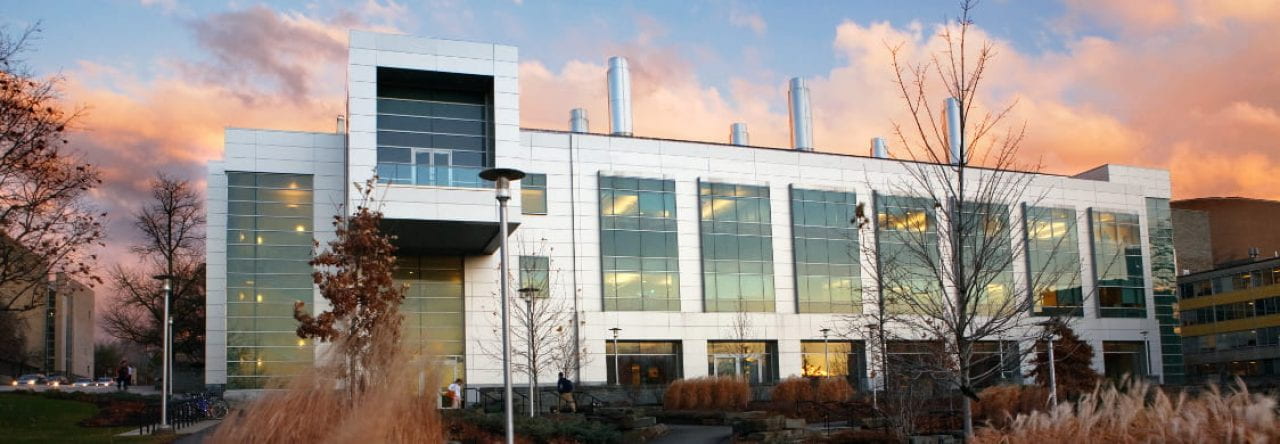David Muller
Samuel B. Eckert Professor of Engineering
Applied and Engineering Physics
Biography
David Muller is the Samuel B. Eckert Professor of Engineering in the School of Applied and Engineering Physics at Cornell University, and the co-director of the Kavli Institute at Cornell for Nanoscale Science. His current research interests include the atomic-scale characterization and control of matter for applications in energy storage and conversion, exploring new phases of two-dimensional materials that cannot exist in the bulk, and developing a new generation of probability-current detectors and algorithms for measuring physical properties in an electron microscope.
David is a graduate of the University of Sydney and received a Ph.D. from Cornell University in the field of Physics. As a scientist at Bell Labs, he applied his research on imaging single atoms and atomic-scale spectroscopy to determine the physical limits on how small a transistor can be made. His work more generally has focused on the development of scanning transmission electron microscopy and spectroscopy as quantitative tools for atomic-resolution materials analysis, and its application to unraveling connections between electronic-structure changes on the atomic scale and the macroscopic behavior of materials. This includes systems as diverse as fuel cells, batteries, turbine blades, and two-dimensional superconductors.
David is a fellow of both the American Physical Society and the Microscopy Society of America, and recipient of the MSA Burton Medal and MAS Duncumb Award. Full list of Dr. Muller’s publications.
Research Interests
My group’s research at Cornell University is focused on understanding the behavior of materials and devices at the atomic scale, with an emphasis on renewable energy applications. Using some of the most powerful electron microscopes in the world, placed in specially-designed and environmentally isolated rooms, we are able to explore the chemistry, electronic structure and bonding inside objects as diverse as transistors, turbine blades, two-dimensional superconductors, fuel cells and batteries. All of these systems are made up of different materials, and where they join at the atomic scale, the boundary conditions on the quantum mechanical wavefunctions force very different behavior from what might be expected of the bulk materials. At these boundaries, where everyday intuition breaks down, we are searching for new and unexpected phases and physics. The impact of this research on devices, both larger and small, could be very significant.
We are interested in students who enjoy both physics theory and experiment, can think in both real and reciprocal space, and care about both why things are, and what they might be used for. Openings are likely in the area of atomically-engineered materials for energy generation, conversion and storage, and studies of two-dimensional materials and electronic phases in complex oxides. Projects range from fundamental science to collaboration with industry.
- Energy Systems
- Nanotechnology
- Energy and the Environment
- Condensed Matter and Material Physics
- Image Analysis
- Imaging and Instrumentation
- Sustainable Energy Systems
- Advanced Materials
Selected Publications
- “Electron Ptychography of 2D Materials to Deep Sub-Ångström Resolution”, Y. Jiang, Z. Chen, Y. Han, P. Deb, H. Gao, S. Xie, P. Purohit, M. W. Tate, J. Park, S. M. Gruner, V. Elser, and D. A. Muller, Nature 559, 343–349 (2018).
- “Strain Mapping of Two-Dimensional Heterostructures with Sub-picometer Precision”, Y. Han, K. Nguyen, M. Cao, P. Cueva, S. Xie, M. W. Tate, P. Purohit, S. M. Gruner, J. Park, and D. A. Muller, Nano Letters 18, 3746–3751 (2018).
- “Sub-nanometre channels embedded in two-dimensional materials”, Y. Han, M.-Y. Li, G.-S. Jung, M. A. Marsalis, Z. Qin, M. J. Buehler, L.-J. Li, and D. A. Muller, Nature Materials 17, 129-133 (2018).
- “Nanoscale Imaging of Lithium Ion Distribution During In Situ Operation of Battery Electrode and Electrolyte”, M. E. Holtz, Y. Yu, D. Gunceler, J. Gao, R. Sundararaman, K. A. Schwarz, T. A. Arias, H. D. Abruña, and D. A. Muller, Nano Letters 14, 1453-1459 (2014).
- “Atomic-Scale Chemical Imaging of Composition and Bonding by Aberration-Corrected Microscopy,” D. A. Muller, L. F. Kourkoutis, M. Murfitt, J. H. Song, H. Y. Hwang, J. Silcox, N. Dellby, and O. L. Krivanek, Science 319, 1073-1076 (2008).
Selected Awards and Honors
- Peter Duncumb Award for outstanding achievement in the field of microanalysis, Microbeam Analysis Society 2016
- Fellow of the Microscopy Society of America (Microscopy Society of America) 2013
- Fellow of the American Physical Society 2011
- Provost’s Award for Distinguished Research 2010 (Office of the Provost, Cornell University) 2010
- Burton Medal (Microscopy Society of America) 2006
- Chau Award for Excellence in Teaching (Applied & Engineering Physics, Cornell University) 2006
Education
- BS (Physics), University of Sydney, 1991
- MS (Physics), University of Sydney, 1993
- Ph D (Physics), Cornell University, 1996





